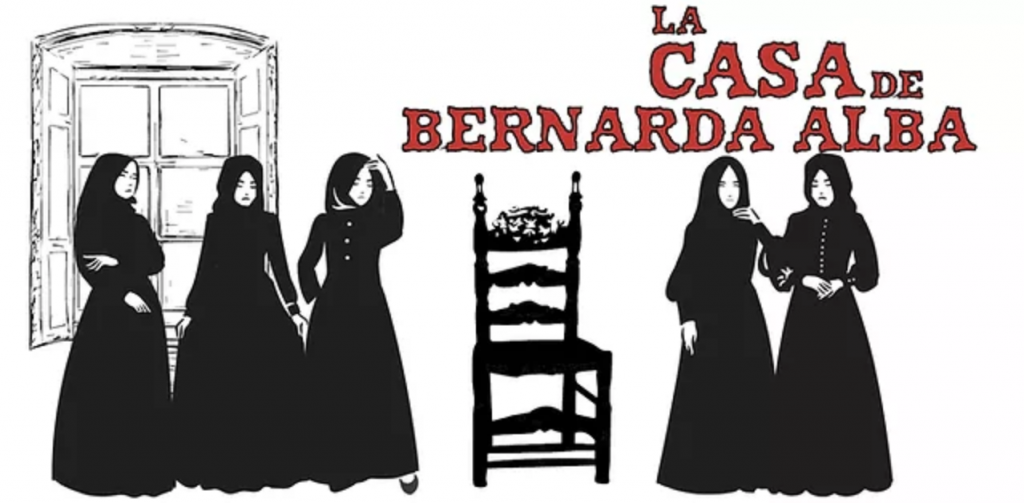by Peter Feher

And Federico García Lorca’s 1936 play is a good place to start. La Casa de Bernarda Alba makes for highly effective theater in that the simplest elements (a chair, a door, an offstage character) generate all the drama. Even in this operatic adaptation, Scott Skiba’s direction and Jeff Herrmann’s set design emphasized the essentials and communicated much of the action silently.
Such stark constraints became practical advantages when putting the story to music. The play’s powerful conceit — no male characters appear onstage — meant composer Griffin Candey had a limited range of voices he could write for, though plenty of talented singers to cover each part. The ensemble of five daughters was a case in point, double-cast with students from BW’s undergraduate Voice Performance program. Conductor Dean Buck steered the debuting cast members at the July 10 performance seamlessly through the chamber orchestra score.
With roles for actresses of every age, Bernarda Alba joins a small tradition of all-female operas, most famously Puccini’s Suor Angelica. Sure enough, the Italian composer’s work, set in a convent that the outside world then intrudes upon, serves as one model for how such a plot gets going.
Lorca’s Mother Superior comes in the form of his title character, and the faith she sustains is a wholly negative one. The first rule of her house is subservience, and librettist Caridad Svich conveyed the message plainly, having Bernarda Alba sing the word “silencio” for many of her entrances and repeat it at the opera’s close. Those final moments sent mezzo-soprano Claudia Chapa to the top of her register, allowing the opportunity for the character to take frightening musical control.
But efficient gestures were sometimes missing in this busy adaptation. Throughout, the text had little repetition, with every sung note introducing a new syllable or word, adding up to an overwhelming amount of material across three acts. Some lines were in Spanish, and some were in English, but the distinction seemed arbitrary. Characters thought and spoke in both languages, though this is where a different approach could have clarified the storytelling.
Certain roles also refused to be pinned down. As La Poncia, the family’s head maid, mezzo-soprano Brooke Larimer had the trickiest balance to strike, somewhere between sympathetic and sinister, and she managed these opposites believably, even where the libretto made her motivations muddled. More successful was the operatic treatment of María Josefa, portrayed by soprano Nanette Canfield, who floated in as the specter of old age, representing everything Bernarda Alba hopes to avoid.
Which gets to the question animating the story: what made the title character this way? Various answers emerge, including a disgust for her mother, jealousy of her daughters, hatred for her former husbands, and a feeling of superiority to her neighbors.
A remarkable moment of Candey and Svich’s opera takes shape in Act 2 when, stuck in the house they’re forbidden to leave, the daughters overhear a group of men working the fields outside. A small offstage chorus accomplishes the effect, conjuring a beautiful musical alternative to the limited world of Bernarda Alba.
Published on ClevelandClassical.com June 29, 2022.
Click here for a printable copy of this article


